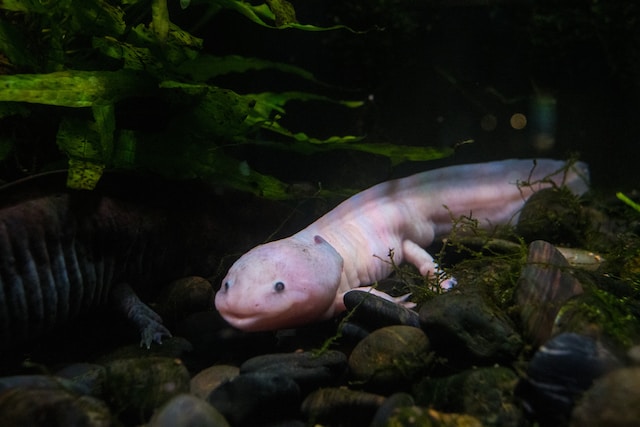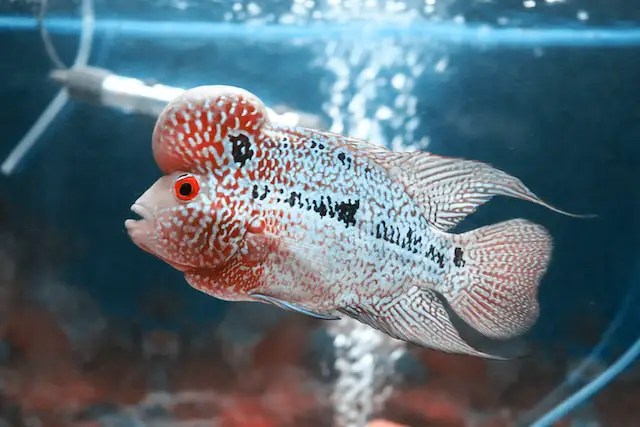Axolotl as Pets: A Fascinating and Unique Choice
Hello there, fellow pet enthusiasts! Today, we’re diving into the enchanting world of Axolotl as pets. These remarkable aquatic creatures have been captivating pet lovers around the world, and it’s no wonder why. As an avid Axolotl enthusiast and advisor, I am thrilled to provide you with helpful suggestions and reasons for considering these extraordinary creatures as part of your family.
What is an Axolotl? Can We Consider Axolotl as Pets?
Before we plunge into the ins and outs of having an Axolotl as a pet, let’s first get acquainted with these intriguing amphibians. The Axolotl, scientifically known as Ambystoma mexicanum, is a type of salamander that exhibits a unique characteristic called neoteny. Unlike other salamanders, Axolotls retain their juvenile aquatic form throughout their entire lives. This means they remain aquatic and gilled, making them perfect for an underwater pet experience.
Axolotl as Pets: Is it a Good Idea?
The Fascinating Axolotl: A Unique Pet Choice
If you’re seeking a pet that stands out from the typical furry or feathery companions, then Axolotls are an ideal choice. Their external gills, delicate frilly appearance, and captivating colors make them mesmerizing to observe.
Axolotl’s Low Maintenance Needs
Axolotls are relatively low-maintenance pets, making them suitable for both beginners and experienced pet owners. Their aquatic habitat requires less upkeep than traditional terrestrial pets, which can be a major plus for those with busy lifestyles.
Legal Considerations and Restrictions
Before falling in love with the idea of an Axolotl pet, ensure they are legal in your area. Some regions have restrictions on keeping them as pets due to conservation concerns or other regulations.
Setting Up the Perfect Axolotl Habitat
Providing a comfortable and safe environment for your Axolotl is crucial for their well-being. Let’s explore the essential aspects of setting up their perfect habitat.
Choosing the Right Aquarium
Selecting the appropriate aquarium size is vital for your Axolotl’s happiness. A spacious tank with a minimum of 20 gallons per Axolotl is recommended to allow them to swim freely.
Filtration and Water Quality
Axolotls are sensitive to water conditions, so investing in a reliable filtration system and regularly testing the water quality is essential.
Substrate and Decorations
Choose a soft substrate like sand or fine gravel to prevent injury to your Axolotl’s delicate underbelly. Adding aquatic plants and decorations offers hiding spots and enriches their environment.
Optimal Water Temperature and Lighting
Maintaining the right water temperature between 60°F to 68°F (15°C to 20°C) and providing low lighting mimics their natural habitat.
Caring for Multiple Axolotls
If you plan to have multiple Axolotls, consider providing ample space and separate hiding spots to reduce territorial conflicts.
Feeding Your Axolotl
Proper nutrition is essential to ensure your Axolotl thrives and remains healthy throughout their life.
The Axolotl Diet: Carnivorous Appetite
Axolotls are carnivores, primarily feasting on small aquatic creatures like worms, insects, and even small fish.
Choosing Suitable Food Options
Commercially available pellets and frozen food items can provide a balanced diet for your Axolotl.
Feeding Schedule and Quantity
Feed your Axolotl every other day, adjusting the amount based on their appetite and size.
Handling Feeding Challenges
In case your Axolotl refuses to eat, consider trying different food varieties and monitor their behavior for signs of illness.
Axolotl Health and Wellness
Ensuring your Axolotl’s health is paramount to their happiness. Let’s explore how to keep them in top shape.
Identifying Signs of Good Health
Knowing the signs of a healthy Axolotl, such as clear skin, vibrant gills, and active behavior, is essential.
Common Health Issues and Solutions
Keep an eye out for potential health issues like fungal infections or parasites and consult a vet promptly if needed.
Regular Vet Checkups
Schedule regular checkups with a veterinarian experienced in exotic aquatic pets to catch any health concerns early.
Handling and Interacting with Axolotl as Pets
Interacting with your Axolotl can be a delightful experience if done correctly.
Understanding Axolotl Behavior
Learning their behaviors and preferences will help you create a stress-free interaction.
Handling Dos and Don’ts
Handle your Axolotl with care and avoid excessive touching to prevent stress and injury.
Enriching Your Axolotl’s Environment
Offer stimulating activities such as providing suitable hiding spots or placing food in different locations to encourage natural behaviors.
Breeding Axolotl as Pets: A Complex Endeavor
Breeding Axolotls is a challenging but rewarding venture for experienced enthusiasts.
Maturity and Sexual Differentiation
Identify signs of sexual maturity before considering breeding your Axolotls.
Preparing for Breeding
Create a separate breeding tank with the right conditions for successful reproduction.
The Breeding Process
Understand the intricacies of the breeding process, including courtship and egg-laying.
Raising Axolotl Offspring
Raising the offspring requires special care and attention until they become independent.
Common Myths and Misconceptions about Axolotl as Pets:
Debunking common myths and misconceptions will help you make informed decisions about having an Axolotl as a pet.
Myth 1: Axolotls are baby dragons or mythical creatures.
Reality: While it’s easy to see why people might make this connection due to their unique appearance, Axolotls are not mythical creatures or baby dragons. They are real amphibians known for their neotenic features, remaining in their aquatic larval form throughout their lives.
Myth 2: Axolotls can regrow any body part indefinitely.
Reality: Axolotls are remarkable in their regenerative abilities, but they cannot regrow any body part indefinitely. While they can regrow limbs, gills, and even parts of their central nervous system, there are limits to this regenerative capacity.
Myth 3: Axolotls are easy, no-maintenance pets.
Reality: While Axolotls are relatively low maintenance compared to some other pets, they still require proper care and attention. Their habitat needs to be regularly cleaned and maintained, and they require a balanced diet for optimal health.
Myth 4: Axolotls can survive in any water condition.
Reality: Axolotls are sensitive to water quality, and poor water conditions can be detrimental to their health. It’s essential to monitor water parameters and provide a suitable environment with appropriate filtration.
Myth 5: Axolotls can live without water.
Reality: Axolotls are fully aquatic creatures and cannot survive outside of water. Their gills are essential for breathing, and they need to be submerged in water to thrive.
Myth 6: Axolotls are easy to breed and raise.
Reality: Breeding Axolotls can be a complex and challenging process that requires careful planning and monitoring. Raising the offspring also demands special care and attention to ensure their survival.
Myth 7: Axolotls can eat any food you give them.
Reality: While Axolotls are carnivorous and have a diverse diet in the wild, not all food options are suitable for them in captivity. Feeding them inappropriate or oversized prey can lead to digestive issues.
Myth 8: Axolotls don’t need any social interaction.
Reality: Axolotls are solitary creatures, and they don’t require social interaction with other Axolotls. However, they can still benefit from gentle handling and occasional interaction with their owners.
Myth 9: Axolotls have a short lifespan.
Reality: With proper care, Axolotls can live for many years. On average, they can live up to 10-15 years, and some have been known to live even longer.
Myth 10: Axolotls are not endangered, so they don’t need conservation efforts.
Reality: Axolotls are listed as critically endangered in the wild due to habitat loss and water pollution. Breeding and keeping them in captivity responsibly can contribute to conservation efforts and help protect this fascinating species.
Pros and Cons of Keeping Axolotl as Pets
Let’s weigh the advantages and disadvantages of having these unique creatures as companions.
Pros of Keeping Axolotl as Pets:
Fascinating and Unique Creatures: Axolotls’ neotenic features and aquatic lifestyle make them intriguing and visually captivating pets.
Low Maintenance Needs: Compared to many other pets, Axolotls require relatively low maintenance, especially in terms of grooming and exercise.
No Need for Land Space: Being fully aquatic, Axolotls do not require land space like terrestrial pets, making them suitable for small living spaces.
Quiet and Calm: Axolotls are quiet and peaceful pets, which can be ideal for people who prefer a tranquil home environment.
Fascinating Regenerative Abilities: Their ability to regrow limbs and some organs is awe-inspiring to observe and makes them even more unique.
Long Lifespan: With proper care, Axolotls can live for a decade or more, providing long-term companionship.
Low Allergenic Potential: Unlike many furry or feathered pets, Axolotls are unlikely to trigger allergies in people.
Educational Value: Keeping Axolotls as pets can be a fantastic learning opportunity, especially for children, as it allows them to observe and understand aquatic ecosystems.
No Biting or Scratching: Axolotls do not have sharp teeth or claws, so there is no risk of biting or scratching during handling.
Cons of Keeping Axolotl as Pets:
Specialized Habitat Requirements: Axolotls need a well-maintained aquatic environment with specific water parameters, which can be more challenging to set up and maintain than typical fish tanks.
Sensitivity to Water Quality: Axolotls are highly sensitive to changes in water quality, so regular testing and maintenance are essential.
Limited Availability: Depending on your location, finding Axolotls for sale or adoption may be challenging due to legal restrictions or limited breeding sources.
Not Ideal for Handling: Axolotls are delicate creatures, and excessive handling can cause stress and potential harm to their skin and gills.
Cannibalistic Tendencies: Young Axolotls may exhibit cannibalistic behavior, which can complicate keeping multiple individuals together.
Temperature and Lighting Control: Maintaining the correct water temperature and appropriate lighting can be crucial for Axolotl’s health.
Legal Restrictions: In some regions, Axolotls are prohibited as pets due to concerns about their impact on local ecosystems or conservation efforts.
Potential Health Issues: Axolotls can be prone to certain health issues, such as fungal infections or parasites, requiring attentive care and prompt vet visits if problems arise.
Specialized Diet: Providing a varied and appropriate diet for Axolotls may require more effort and research compared to traditional pet diets.
Conclusion: Axolotl as Pets
In conclusion, Axolotls make fascinating and unique pets for those willing to dedicate time and effort to their care. With their captivating appearance and relatively low maintenance needs, they can bring a slice of aquatic wonder into your life. However, it’s crucial to research and understand their specific requirements to provide them with the best possible care.




